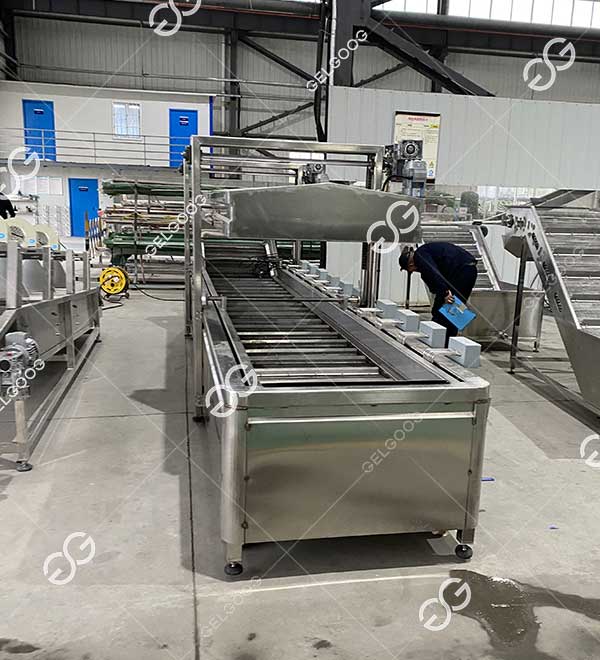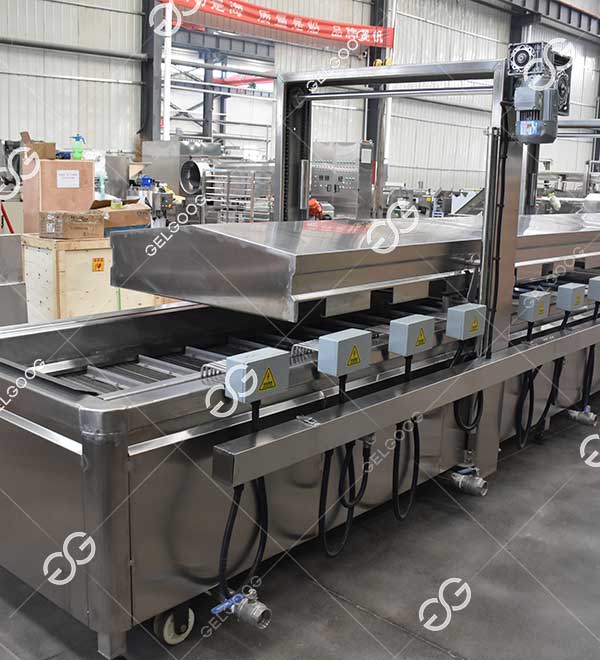
Key Blanching Machine Components
A typical continuous blanching machine typically includes:
- Frame/Case: Made of stainless steel and insulated.
- Heating System: Electric heating tubes, steam generator, or gas boiler.
- Conveyor System: Stainless steel mesh belt or spiral blades with adjustable speed to control blanching time.
- Temperature Control System: Precisely controls water or steam temperature.
- Water Circulation/Steam Injection System: Ensures uniform distribution of heat.
- Cooling Section (Optional): Immediately after blanching, the vegetables are cooled with cold water or air to stop residual heat from continuing to cook.
Factors to Consider When Selecting a Blanching Machine
- Vegetable Type: Different blanching machines are suitable for different types and shapes of vegetables, such as leafy vegetables, root vegetables, and cubed vegetables.
- Production Requirements: This determines the size of the equipment and the conveyor speed.
- Process Requirements: Steam-type blanching is preferred for products that require extremely high nutrient retention (such as high-end quick-frozen products). Energy Requirements: Does the factory have an existing steam source, or is it solely electricity-based?
- Budget: This includes the initial equipment investment and long-term operating costs (water, electricity, and steam).
Summary
Vegetable blanching machines are essential equipment in modern vegetable processing, particularly in the quick-freezing, dehydration, and canning industries. Through their scientific "blanching" process, they lay a solid foundation for long-term freshness preservation and consistent quality. Choosing the right blanching machine is crucial for ensuring product quality, improving production efficiency, and reducing operating costs.



